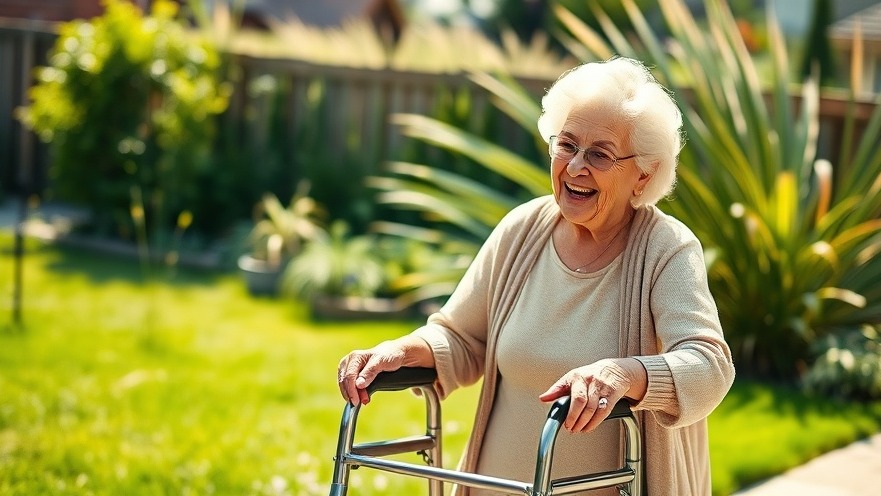
Finding Freedom in Movement
In the landscape of healthcare, the perception of movement among those with mobility limitations often deviates from conventional ideas of fitness. Concerns about traditional gym routines or group classes can overwhelm, yet wellness transcends these norms. Movement should be a source of joy, not stress, particularly for those managing disabilities or decreased mobility.
Understanding the Mindset Shift Towards Adaptation
The journey towards wellness begins with a significant mindset shift from frustration to adaptation. As individuals grapple with changes in mobility due to injury, age, or chronic conditions, reconnecting with their body becomes crucial. Recognizing that movement does not need to mimic high-impact workouts is vital; it can manifest in more accessible forms, such as gentle stretching, breath work, or leisurely strolls. These small actions foster overall well-being and bolster mental health.
The minor victories often hold great significance. Achievements like walking a little further or successfully engaging with a new form of movement serve as reminders that any progress is something to celebrate. Shifting focus from intensity to intention allows individuals to embrace their evolving relationship with physical activity.
Choosing the Right Tools for Enhanced Mobility
Another integral aspect of promoting an active lifestyle among individuals with mobility constraints revolves around the selection of appropriate tools. Mobility aids such as walkers and wheelchairs can significantly enhance independence and confidence, paving the way for a more engaged and active life.
Modern mobility devices, like those offered by brands such as Rollz, fuse functionality with aesthetic appeal, dismantling the stigma associated with traditional aids. These products encourage a proactive approach to mobility challenges, inviting individuals back into spaces they may have previously avoided. With the right device supporting them, patients can venture out for day-to-day activities or social engagements without fear or constraint.
Creating a Holistic Wellness Strategy
Any effective wellness initiative must encompass mental, emotional, and social dimensions. It is essential to cultivate a comprehensive wellness plan that includes activities like nature walks, mindfulness practices, or simply enjoying calming music. Whether patients are taking small steps outside or engaging in seated dances, the key is to make movement a fulfilling experience rather than a taxing obligation.
Building a sustainable relationship with movement includes listening to the body, setting achievable goals, and prioritizing consistency. For concierge medical practice owners, guiding patients in this journey can greatly enhance patient care and broaden services offered. Understanding each individual's unique capabilities informs an empathetic approach that fosters trust and encouragement.
Empowering Patients Through Innovative Practices
Empowering patients hinges on an attitude that values personal journeys towards health and wellness. Innovative practices that integrate adaptive techniques can drastically reshape how mobility and fitness are approached in clinical settings. Encouraging patients to adjust their fitness regimens while highlighting the importance of movement fosters an inclusive environment where every individual feels welcomed and valued.
Patient engagement strategies should revolve around promoting movement as a vital part of mental health. Evidence suggests that individuals who actively seek out social connections and engage in physical activities experience positive mental health benefits. Concierge medical practices can enhance these experiences by facilitating community events centered around adaptive movement.
Conclusion: Becoming Champions of Wellness
In conclusion, redefining movement for individuals with mobility limitations holds tremendous potential for enhancing wellness strategies in concierge medical practices. By fostering a culture of adaptation and embracing an empathetic approach, healthcare providers can significantly impact their patients’ quality of life.
As trends towards patient-centered care continue to evolve, there is no time like the present to reconsider wellness strategies. Incorporating adaptive movement into your practice is not just beneficial; it is essential for engaging patients and addressing their diverse health needs.
 Add Row
Add Row  Add
Add 




Write A Comment